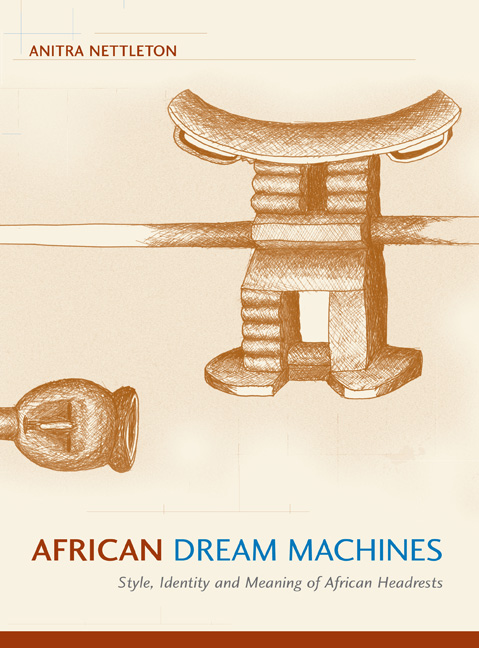Book contents
- Frontmatter
- Contents
- Preface
- Acknowledgements
- Notes on the Use of African Ethnic Names and Country and Place Names
- References to Illustrations in the Text and Notes on Illustrations
- Chapter 1 Headrests and Art
- Chapter 2 A Matter of Style, or, Why Style Matters
- Chapter 3 Methodology, Position and Limitations
- Chapter 4 The Geographical and Chronological Distribution of the Columned Headrest
- Chapter 5 Authenticity and History
- Chapter 6 East African Headrests: Identity, Form and Aesthetics
- Chapter 7 Tracing Histories: Central and Southern African Connections
- Chapter 8 Not Just a Curious Beauty: The Anatomy of Meaning in Useful Objects
- Notes to Chapters
- Bibliography
- List of Illustrations
- Index
Chapter 1 - Headrests and Art
Published online by Cambridge University Press: 18 May 2019
- Frontmatter
- Contents
- Preface
- Acknowledgements
- Notes on the Use of African Ethnic Names and Country and Place Names
- References to Illustrations in the Text and Notes on Illustrations
- Chapter 1 Headrests and Art
- Chapter 2 A Matter of Style, or, Why Style Matters
- Chapter 3 Methodology, Position and Limitations
- Chapter 4 The Geographical and Chronological Distribution of the Columned Headrest
- Chapter 5 Authenticity and History
- Chapter 6 East African Headrests: Identity, Form and Aesthetics
- Chapter 7 Tracing Histories: Central and Southern African Connections
- Chapter 8 Not Just a Curious Beauty: The Anatomy of Meaning in Useful Objects
- Notes to Chapters
- Bibliography
- List of Illustrations
- Index
Summary
[ART] OBJECTS ARE not there to fulfill a technical or even aesthetic function, but quite simply to symbolize that function and solemnize it by their age, to which their patina bears witness. Being defined as the instruments of a ritual, they are never questioned as to their function or convenience (Bourdieu 1980:313).
African headrests, as members of a class of objects that have been assimilated into the mystical realm of art, have been subject to the processes of transfiguration outlined by Bourdieu in the quotation above. They have become synecdochic metaphors of not only a class of functional, yet more than utilitarian objects, but also of groups, identities and personal histories. The headrest in the African context is thus clearly not the same object as the headrest in the ‘art’ collections of the modern West. Its metamorphosis, to use Malraux's not unproblematic notion, has been among the most recent of a set of conjuring acts to be performed by the discipline of art history on the ritual and functional objects of African and other peoples’ material culture. Similar transpositions of items of material culture from across the world have allowed the emergence of the study of ‘World Art’, as opposed to the more narrowly defined forms ofWestern ‘High Art’ in the increasingly challenged discipline of art history. In many ways, this study,which encompasses only one kind of object, from one continent, is counter-intuitive to the kind of study that the advocates of the discipline of ‘World Art’ might envisage, largely because it challenges, and ultimately rejects the idea that categories such as art and craft have any relevance outside studies of post-Renaissance Western art. This study is not so much, then, about how we recognise things as ‘art’, but how we deal with things that have been included into a pre-existing canon with some dis-ease.
The study of human-made objects from Africa and other regions outside the West has only recently been included as part of the larger project of art history, mostly from the mid-twentieth century onwards. Prior to this, most studies of those African, native American and Oceanic objects that were later warped into the dimension of art were either ethnological (and these were rather thin on the ground), appreciative or aesthetic in the most general of senses, but rarely were they ‘critical’.
- Type
- Chapter
- Information
- African Dream MachinesStyle, Identity and Meaning of African Headrests, pp. 1 - 22Publisher: Wits University PressPrint publication year: 2007



